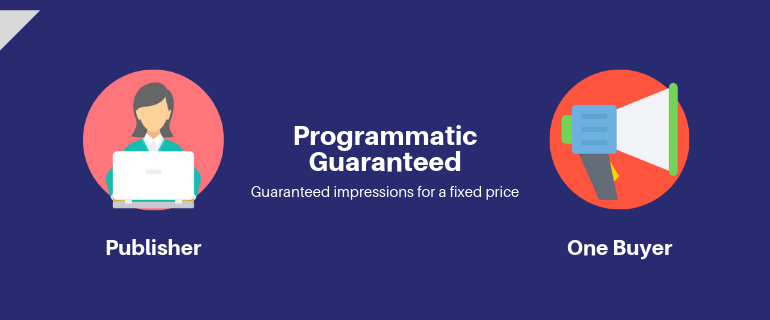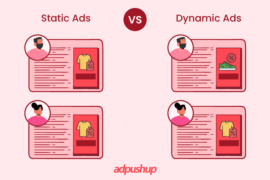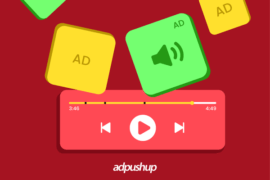Programmatic allows ad tech to buy and sell ads through an automated process. While it might seem like a programmatic deal doesn’t require much human intervention, it takes a significant amount of human hour to make things work and generate profit.
However, it has definitely changed the way we exchange media now. The automated process of finding the right buyer and seller, setting up the campaign, and monetary exchange have made it easy for everyone to participate.
One of the popular programmatic deals that we are covering here is programmatic guaranteed.
Programmatic guaranteed is growing more rapidly than any other programmatic or non-programmatic method. As deduced by Google, programmatic ad spending will rise from $25 Billion (2017) to $43 Billion by 2020.
To understand why’s that, let’s start with the basics.
What is Programmatic Guaranteed?
Programmatic Guaranteed is a one-on-one direct deal where seller (publishers) offers a fixed number of impressions for a guaranteed price. Programmatic guaranteed is a type of programmatic direct. Both terms are often used interchangeably.
Both buyers and sellers can initiate a programmatic guaranteed deal using their ad manager platforms (like GAM). Publisher’s sales team can start by creating a proposal deal and sending it to interested buyers. Similarly, advertisers can contact publishers and ask for guaranteed dealings.
In order to carry out programmatic guaranteed, the advertiser-side agency has to sync its data management platform (DMP) to the publisher’s DMP. Information is exchanged to identify the publisher’s audience. After knowing the audience type and number of impressions, the agency can plan out a campaign for the available inventory. Afterwards, the publisher is offered a fixed deal by the buyer.
How did Programmatic Guaranteed Evolve in the Programmatic Ad Industry?
Programmatic guaranteed came into the ad industry in 2015 making it a fairly new programmatic method.
During initial days of programmatic deal, RTB (real-time bidding) was the revolutionary method to sell and purchase digital inventory which is still being practiced. RTB enabled publishers to sell their inventory where they can pre-design the campaign and sell it only whenever an impression appears. However, it never guaranteed impressions or price.
This led to days where publishers were selling their high-value and rest of the inventory at the same prices. Similarly, advertisers had little or no idea about their bids and creatives. RTB involves mediator parties viz. demand-side platforms and supply-side platforms making the process hectic and lengthy. The involvement of so many parties and auctions being open to all bidders put forth concern related to security of user data.
To get a better deal out of high-value inventory, ad tech introduced private auction. In this method, only the invited advertisers or agencies are able to bid on the publisher’s inventory making it fairly secure. However, publishers were still unable to monetize their premium inventory at the desired (fixed) price.
Next came programmatic direct. Here, publishers and advertisers could communicate directly and negotiate a deal based on fixed impressions and price.
You may have heard programmatic premium, premium direct, automated guaranteed, programmatic guaranteed, and programmatic reserved. They all come under the umbrella of programmatic direct with a slight difference in their execution.
Benefits of Programmatic Guaranteed
Saves time: Programmatic guaranteed takes 57% less time than traditional direct selling, according to a research conducted by Boston Consulting Group in 2018. With programmatic in action, there is no need to create insertion order, manual data entry and evaluation, waiting on approval, and chase payment.
Efficiency and security: As programmatic guaranteed involves a fixed price and number of impressions, both buyers and sellers experience an efficient deal. Also, removing unnecessary mediators ensures the security from major ad frauds.
Transparency and trust: Since seller and buyer both are dealing one-on-one, transparent policies can be established by putting all fair demands on the table. Also, publishers can approve/disapprove of the advertisers before selling their inventory which brings out the trust factor from the publisher’s side.
Effective use of premium inventory: Publishers are able to sell their premium inventories at a fair price without risking security. Additionally, advertisers get a fixed number of impressions by accessing the premium inventories.
Consequently, programmatic guaranteed also eliminated the manual processes such as exchanging tags, troubleshooting discrepancies, and handling multiple invoices. This means the process involved least human interaction, hence reducing the chances of human error. However, it does require constant monitoring to make it the complete potential.
Programmatic Guaranteed vs. Automated Guaranteed
People often get confused and think programmatic guaranteed and automated guaranteed are the same thing. Well, they’re not. Here’s how:
- Programmatic guaranteed uses a Deal ID to sell the inventory and then displays ads on the website. Whereas, automated guaranteed uses an ad server API to display ads.
- In programmatic guaranteed, buyers have the complete view of the publisher’s inventories and choose the one(s) they wish to purchase. While in automated guaranteed, sellers present their inventories and then both parties negotiate on price.
- Programmatic guaranteed is automated while automated guaranteed requires human involvement.
In short, the major difference between both processes is the execution. If we talk about similarity, the word ‘guaranteed’ is important here. Both the buyer and seller are guaranteed to get something out of the deal.
Programmatic Guaranteed vs. Preferred Deal
Both being a type of programmatic direct can lead to certain confusion. Here are the major difference between the two:
- The biggest difference is ‘guaranteed’. In case of programmatic guaranteed, the inventory is reserved (guaranteed) for buyers. Whereas in case of preferred deal, inventory is not reserved for buyers.
- In the same way, with preferred deals, buyers get to see and inspect the publisher’s inventory before buying it. However, programmatic guaranteed doesn’t enable such features.
Get Started With Programmatic Guaranteed
It should be clear that programmatic guaranteed is not for all the inventory. With guaranteed deals, advertisers want guaranteed impressions/clicks that lead to quality engagement and conversion.
Here is how to go about programmatic guaranteed:
- Consider manpower requirement: Programmatic guaranteed requires planning. For that, publishers generally hire full-time ad ops personal and/or go for third-party services. In any case, publishers would need a dedicated person to segregate the inventory, communicate with potential buyers interested in premium inventory, setup the exchange, and monitor the profits. Programmatic guaranteed will only be able to serve its true benefits if implemented correctly. All this will take manpower to ensure everything works as desired.
- Consider technical requirements: To implement the programmatic guaranteed, you will require an ad manager (like Google Ad Manager). Similarly, an in-house team or outsourced support to monitor the performance and campaign tweaks as required.
- Additional cost: Enabling a new type of deal will surely add to your campaign cost. However, in the long run, selling premium inventory via programmatic guaranteed should improve publisher’s overall inventory value. Before scaling on programmatic guaranteed, check whether your website really brings boost to the overall revenue.
As mentioned, publishers can get started with programmatic guaranteed using Google Ad Manager. It lets them simplify the workflow for programmatic guaranteed by using Google Ad Manager. Publishers can connect to the buyers, send them your proposal, and negotiate within the GAM. Similarly, GAM makes it easy to segment the inventory and sell it via programmatic by toggling buttons.
Takeaways
Programmatic guaranteed can be a bit tricky to implement. Aligning publisher’s DMP and agency DMP can be troublesome, and execution requires technical knowledge as well. However, if implemented correctly, the method can be fruitful and provide a better deal than other programmatic dealings.
We can’t ignore the fact that publishers are choosing programmatic direct over the private marketplace and real-time bidding. And adding to the fact that Google is pushing programmatic guaranteed to its users, one can say, demand for guaranteed deals is going sky high.

Shubham is a digital marketer with rich experience working in the advertisement technology industry. He has vast experience in the programmatic industry, driving business strategy and scaling functions including but not limited to growth and marketing, Operations, process optimization, and Sales.







